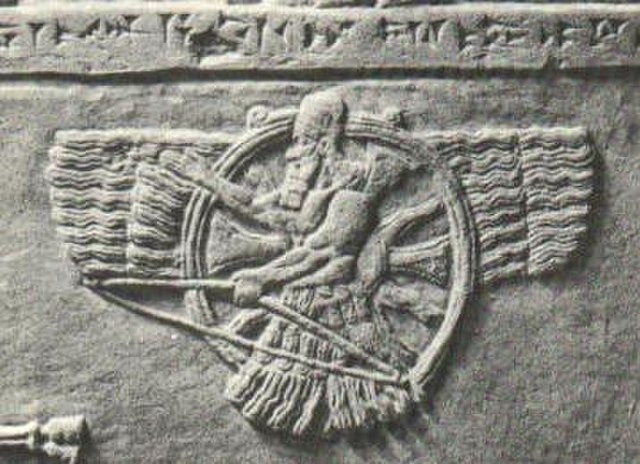Aššur (; Sumerian: 𒀭𒊹𒆠 AN.ŠAR2KI, Assyrian cuneiform: Aš-šurKI, "City of God Aššur"; Syriac: ܐܫܘܪ Āšūr; Old Persian: 𐎠𐎰𐎢𐎼 Aθur, Persian: آشور Āšūr; Hebrew: אַשּׁוּר ʾAššūr, Arabic: اشور), also known as Ashur and Qal'at Sherqat, was the capital of the Old Assyrian city-state (2025–1364 BC), the Middle Assyrian Empire (1363–912 BC), and for a time, of the Neo-Assyrian Empire (911–609 BC). The remains of the city lie on the western bank of the Tigris River, north of the confluence with its tributary, the Little Zab, in what is now Iraq, more precisely in the al-Shirqat District of the Saladin Governorate.
American soldiers on guard at the ruins of Ashur, 2008
Mesopotamia in the 2nd millennium BC
An unfinished basalt statue of Shalmaneser III. From Assur, Iraq. 858–824 BCE. Ancient Orient Museum, Istanbul
A statue of the god Kidudu, guardian spirit of the wall of the city of Ashur. Circa 835 BC. From Ashur, Iraq. The British Museum, London
Ashur, Ashshur, also spelled Ašur, Aššur was the national god of the Assyrians in ancient times until their gradual conversion to Christianity between the 1st and 5th centuries AD.
A Neo-Assyrian sun disk traditionally viewed to symbolize Ashur





